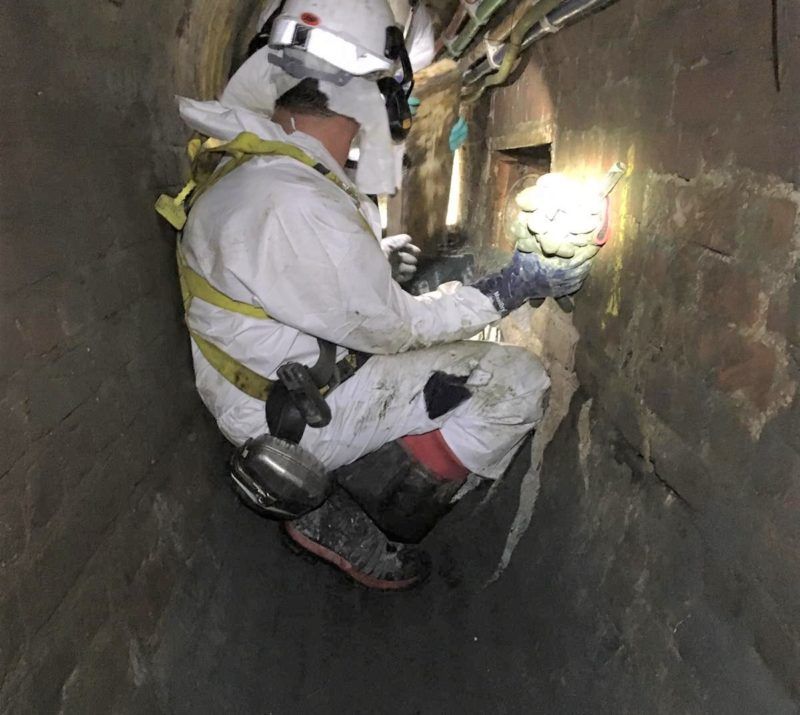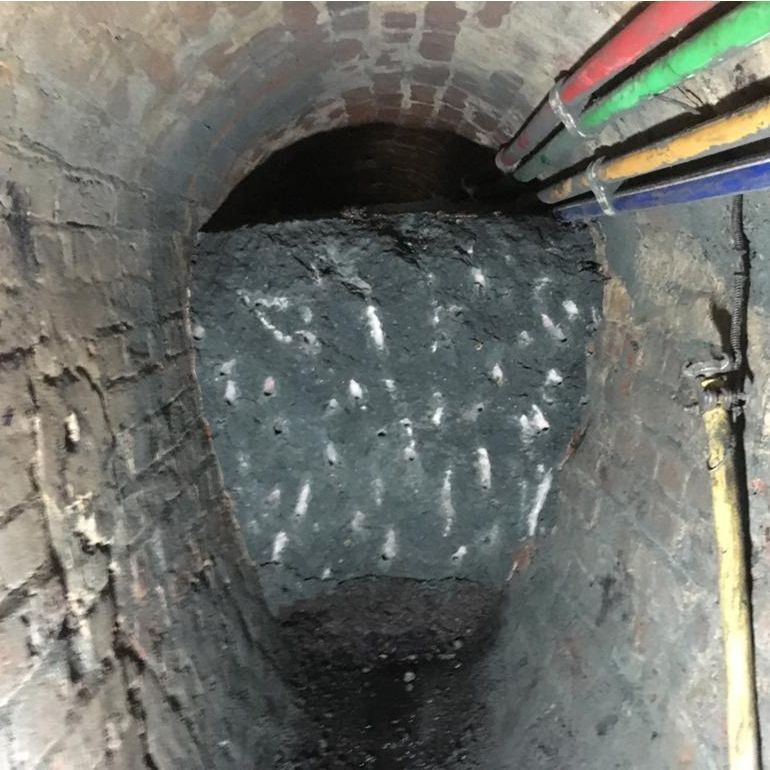Whale-like concreteberg will soon be a minnow then gone

Lump by lump, a giant tube of concrete discovered by Lanes Group plc wastewater engineers is being removed from a sewer.
The rock-hard concreteberg the size of a blue whale was found in the main sewer in Goswell Road, Islington, North London, in April 2019.
After weeks of planning, a team of wastewater engineers from Thames Water has been given the task of removing the estimated 105 tonnes of concrete.
A CCTV survey crew from Lanes, the Thames Water wastewater network services maintenance partner, discovered the huge blockage.
As a result, a Lanes reactive sewer blockage team diverted wastewater flows via a parallel sewer while Thames Water devised a plan to remove the concrete.
An in-house team of Thames Water sewer engineers has been drilling out the record-breaking concreteberg, the biggest ever found.

They have had to work in a sewer that is just 1270mm high and 740mm wide, so is too small to stand up in.
Four workers have been entering the sewer to use a range of cutting tools, including pneumatic drills and high-pressure jets, to break up the mammoth blockage.
The debris has been winched to the surface in buckets and tipped into one-tonne rubble bags, ready to be taken away for disposal.
Tankers operated by Lanes are being used to ensure the sewers keep flowing and to prevent pollution during the work.
Thames Water Field Operations Manager James O’Donoghue said: “This is going to be an incredibly difficult and unpleasant task as it’s one of the smallest sewers we work in.
“But it’s vital that we remove the blockage because it could cause flooding and have a have a catastrophic effect on the environment.”
Concretebergs – named after fatbergs, giant blockages made up of fats, oils, grease (FOG) and wet wipes – are often caused when construction workers accidently break into drains and sewers when pouring concrete into the foundations of new buildings.







